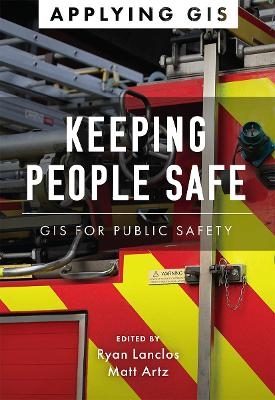
Keeping People Safe
Environmental Systems Research Institute Inc.,U.S. (Verlag)
978-1-58948-686-7 (ISBN)
Creating safer, less vulnerable communities requires a modern approach to understanding threats and hazards that are more complex, costly, and devastating than ever before. Public safety agencies around the world rely on geographic information systems (GIS) technology every day to prevent, protect against, and mitigate the effects of threats and hazards in their communities. By applying GIS, you'll develop a deeper understanding of these complex threats to help you better respond to and recover from the threats that pose the greatest risk to keeping your community safe and ultimately build the resilience needed for the future.
Keeping People Safe: GIS for Public Safety explores a collection of real-life case studies about emergency management, law enforcement, fire, rescue, emergency medical services, and homeland security agencies successfully using GIS for real and potential threats. The book also includes a “how to get started” section that provides ideas, strategies, tools, and actions to help jump-start your own use of GIS for public safety. A collection of online resources, including additional stories, videos, new ideas and concepts, and downloadable tools and content, complements this book. -- Ryan Lanclos and Matt Artz
Ryan Lanclos is the Director of Public Safety Solutions at Esri where he is responsible for strategic initiatives across public safety and national security. He serves as Esri’s subject matter expert on GIS for emergency management and humanitarian response, and he leads Esri’s Disaster Response Program (DRP) that provides 24x7 GIS support to organizations during disasters. Matt Artz is a content strategist for Esri Press. He brings a wide breadth of experience in environmental science, technology, and marketing.
Introduction
How to use this book
Part 1: Emergency communications
Rolling out next-generation 911 to find people in crisis
Illinois State Police
Part 2: Emergency management
When tragedy precipitates innovation
City of Dayton, Ohio
Coronavirus: World connectivity can save lives
Johns Hopkins University and others
Counties organize evacuations well in advance
US Army Corps of Engineers and Suffolk County Office of Emergency Management, New York
Responding to a hurricane from the woods
Pasco County, Florida
Part 3: Fire, rescue, and EMS
Real-time dashboard keeps Pasadena Rose Parade on track
Pasadena Fire Department in California
Embracing apps to better prepare for emergencies
Northwest Fire District of Southern Arizona
Preventing home fires before they start
City of Surrey Fire Service, British Columbia, Canada
COVID-19: Firefighters turn to apps, maps, and dashboards
International Association of Fire Chiefs
Part 4: Homeland security
Sharing data and configurable apps to aid public safety
Portugal Ministry of Internal Administration
Increasing security for the NCAA Final Four Championship
San Antonio Fire Department in Texas
Improving coastal policing with a real-time big data system
Argentine Coast Guard
Police adopt digital apps to secure the state fair
Illinois State Police
Part 5: Humanitarian assistance
Relief workers rely on drone imagery to help a refugee camp
International Organization for Migration
Part 6: Law enforcement
Police save time and money with field data collection efficiency
Redlands Police Department in California
Apps help provide targeted assistance to homeless populations
San Bernardino County Sheriff’s Department, California
Sheriff deploys app to track fugitives
San Juan County Sheriff’s Office, New Mexico
Smart policing gets a boost from enterprise GIS
St. Petersburg Police Department in Florida
Police collaborate to address crime that arrests alone won’t solve
Philadelphia Police Department
Next steps
| Erscheinungsdatum | 14.10.2021 |
|---|---|
| Reihe/Serie | Applying GIS |
| Zusatzinfo | Illustrations, unspecified |
| Verlagsort | Redlands |
| Sprache | englisch |
| Maße | 139 x 203 mm |
| Themenwelt | Naturwissenschaften ► Geowissenschaften ► Geografie / Kartografie |
| Sozialwissenschaften ► Soziologie | |
| ISBN-10 | 1-58948-686-2 / 1589486862 |
| ISBN-13 | 978-1-58948-686-7 / 9781589486867 |
| Zustand | Neuware |
| Haben Sie eine Frage zum Produkt? |
aus dem Bereich


